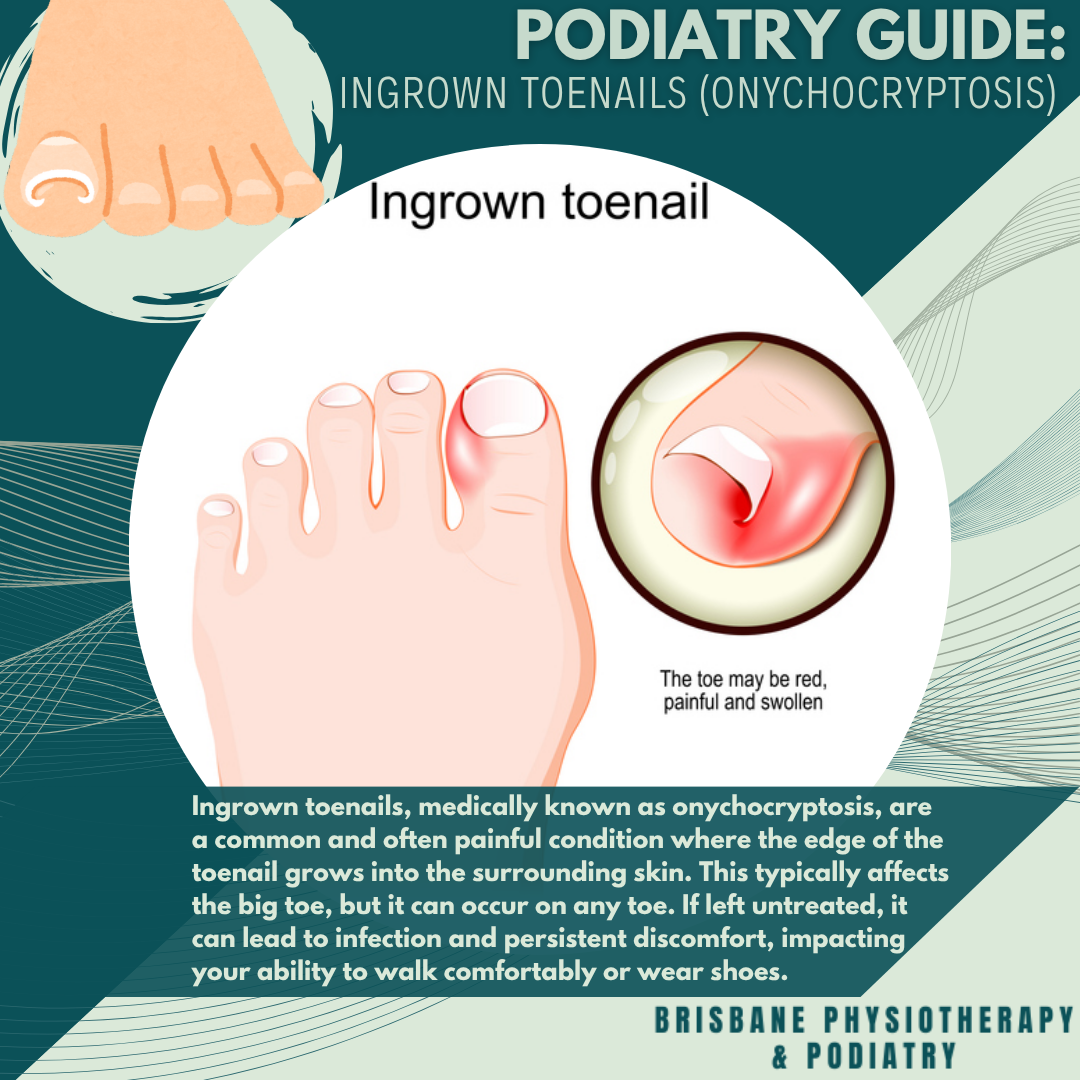Ingrown Toenails (Onychocryptosis): Causes, Symptoms & Podiatry Treatment Options
Ingrown toenails, medically known as onychocryptosis, are a common and often painful condition where the edge of the toenail grows into the surrounding skin. This typically affects the big toe, but it can occur on any toe. If left untreated, it can lead to infection and persistent discomfort, impacting your ability to walk comfortably or wear shoes.
What Causes Ingrown Toenails?
Ingrown toenails can develop due to a number of factors, including:
Incorrect toenail trimming – cutting nails too short or rounding the edges can encourage them to grow into the skin.
Tight footwear – shoes that crowd the toes or apply pressure to the sides of the toenails.
Genetics – some people are more prone to ingrown nails due to the natural shape or width of their nails.
Trauma – stubbing your toe or repetitive impact from sports or work can contribute.
Poor foot hygiene – leading to softening or infection of the skin around the nail.
Symptoms of Ingrown Toenails
Common signs and symptoms include:
Pain or tenderness along the side of the toenail
Redness and swelling around the nail edge
Pus or drainage, indicating infection
Thickening or overgrowth of skin near the nail
Podiatry Treatment Options
Podiatrists offer several effective treatment options depending on the severity of the condition:
1. Conservative Management
For mild to moderate cases, conservative care may include warm saltwater soaks, appropriate footwear advice, and gentle lifting of the nail edge using sterile dressings. Regular podiatric care can help manage recurring problems and prevent worsening.
2. Bracenfix Nail Bracing
Bracenfix is a non-surgical, pain-free nail bracing technique used to correct the nail's curvature over time. A thin brace is applied to the nail surface, gently straightening the nail as it grows. This is ideal for patients who wish to avoid surgery or are prone to recurrence.
3. Nail Surgery (Partial Nail Avulsion with Phenolisation)
In more severe or recurring cases, a minor surgical procedure may be recommended. A partial nail avulsion involves removing the offending section of nail under local anaesthetic. Phenol (a chemical) is then applied to the nail matrix to prevent regrowth of the problematic edge. This procedure is highly effective with a low recurrence rate and minimal downtime.
If you're dealing with a painful ingrown toenail, don’t delay. Our qualified podiatrists can assess your condition and recommend the best course of treatment to get you back on your feet, pain-free.

